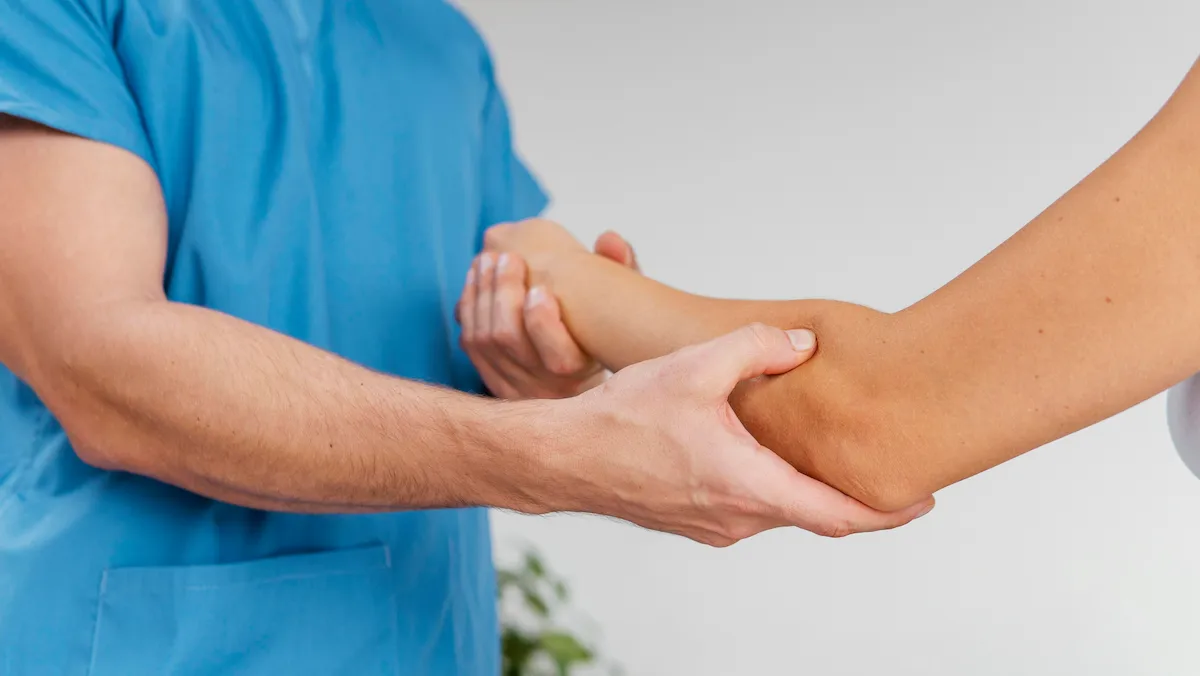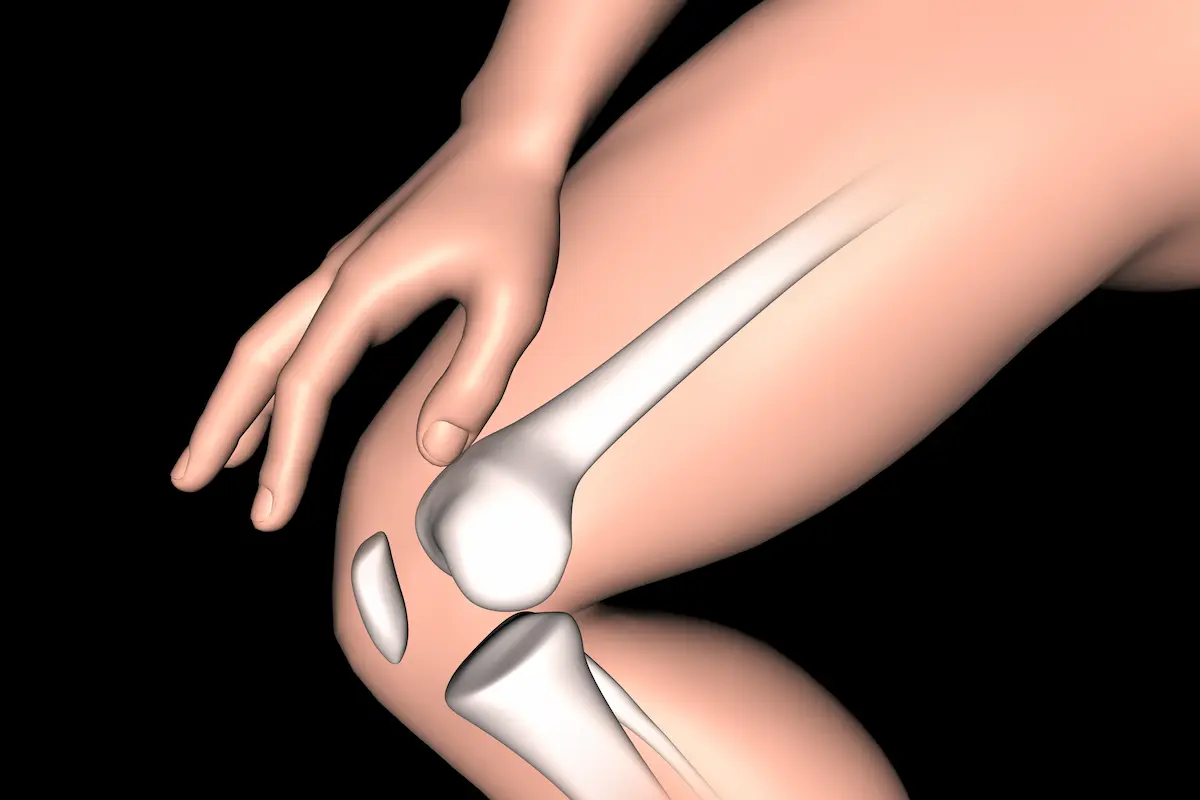The elbow is a complex joint that allows for the movement of the forearm, enabling us to perform a wide range of daily activities, from picking up a cup of coffee to throwing a ball. Understanding the anatomy and function of the elbow joint can help us appreciate the importance of this joint and the impact that any injury or condition can have on our daily lives.
The elbow joint is made up of three bones – the humerus (upper arm bone), the radius and the ulna (forearm bones). The joint is held together by a network of muscles, ligaments, and tendons, which help to stabilize and support the joint. The major structures of the elbow joint include:
Humerus: The humerus is the bone in the upper arm that connects the shoulder joint to the elbow joint.
Radius: The radius is one of two forearm bones that connect to the wrist joint, and it runs alongside the thumb.
Ulna: The ulna is the other forearm bone and it runs alongside the pinky finger.
Cartilage: The elbow joint is lined with cartilage, which helps to cushion the bones and reduce friction during movement.
Ligaments: The elbow joint is held together by three major ligaments – the medial collateral ligament (MCL), lateral collateral ligament (LCL), and the annular ligament. These ligaments help to stabilize the joint and prevent excessive movement.
Muscles: The elbow joint is surrounded by several muscles, including the biceps, triceps, and forearm muscles, which work together to enable movement of the elbow.
Functions of the elbow
The elbow joint is essential for the movement of the forearm, which is important for many daily activities, including:
Bending and straightening the arm: The hinge joint of the elbow allows us to flex (bend) and extend (straighten) the arm, making it possible to perform many everyday tasks such as eating, drinking, and typing.
Rotating the forearm: The joint also enables us to rotate the forearm, which is necessary for tasks such as turning a doorknob or throwing a ball.
Stabilizing the arm: The elbow joint plays a vital role in stabilizing the arm, making it possible to perform delicate tasks that require precise movements, such as painting or playing a musical instrument.


You should see an orthopedic surgeon if you experience any of the following symptoms related to your elbow:
Persistent pain: If you have been experiencing pain in your elbow that is not improving with rest, ice, and pain medication, it is time to see an orthopedic surgeon. Persistent pain can be a sign of a more serious underlying condition, such as tendinitis or arthritis.
Limited mobility: If you have difficulty moving your elbow or have noticed a decrease in your range of motion, it could be a sign of an injury or degenerative condition. An orthopedic surgeon can perform a physical examination and imaging tests to determine the cause of your limited mobility.
Swelling or bruising: Swelling or bruising around the elbow joint can be a sign of a fracture, dislocation, or soft tissue injury. An orthopedic surgeon can evaluate your symptoms and recommend the appropriate treatment.
Numbness or tingling: If you experience numbness or tingling in your elbow or hand, it could be a sign of nerve compression or injury. An orthopedic surgeon can perform diagnostic tests to identify the cause of your symptoms and recommend the appropriate treatment.
Instability or dislocation: If you have experienced a dislocated elbow or have noticed instability in the joint, it is important to seek medical attention as soon as possible. An orthopedic surgeon can evaluate the extent of the injury and recommend the appropriate treatment, which may include surgery.
Overall, if you are experiencing any pain, swelling, or mobility issues in your elbow that are interfering with your daily activities, it is recommended that you consult an orthopedic surgeon. Early diagnosis and treatment can help prevent further damage and improve your chances of a successful recovery.
Surgery may be required for elbow ailments when conservative treatments such as rest, physical therapy, medications, and injections do not relieve symptoms or when the condition is severe. Here are some common elbow conditions that may require surgery:
Fractures: If a fracture in the elbow is severe, displaced, or involves the joint, surgery may be necessary to realign the bones and stabilize them with plates, screws, or wires.
Tennis elbow or golfer’s elbow: If non-surgical treatments such as rest, physical therapy, and injections do not relieve symptoms of chronic elbow pain due to tennis elbow or golfer’s elbow, surgery may be recommended to remove damaged tissue or reattach a torn tendon.
Arthritis: If arthritis in the elbow causes significant pain, stiffness, and loss of function, surgery may be recommended to remove the damaged joint and replace it with an artificial joint.
Elbow instability: If an elbow is unstable and prone to dislocations or subluxations, surgery may be recommended to repair or reconstruct damaged ligaments, tendons, or cartilage.
Ulnar nerve compression: If conservative treatments do not relieve symptoms of ulnar nerve compression, surgery may be recommended to release pressure on the nerve and restore function.
The decision to have surgery for an elbow ailment depends on the severity and duration of the symptoms, the patient’s overall health and medical history, and the expected benefits and risks of the procedure

New No. 85, Royapettah High Road, Royapettah, Chennai – 600014
© Designed and Developed By cloudstar.digital